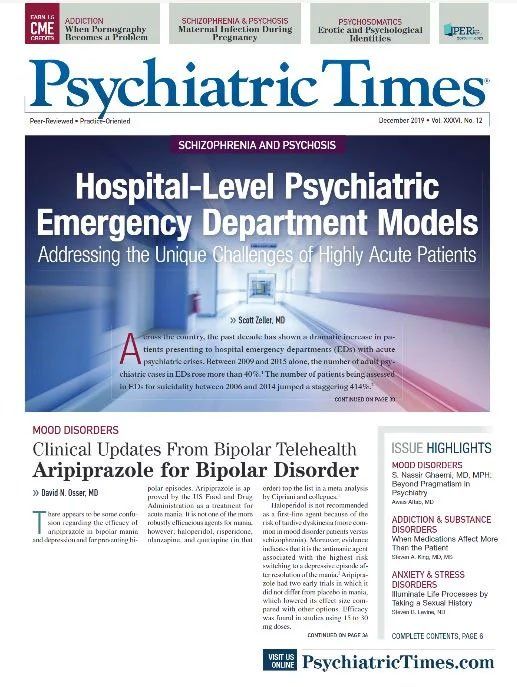Publication
Article
Psychiatric Times
Mindfulness
Author(s):
In our role as clinicians, we participate in the practice of medicine because there is always more to learn, and more experience to be gained. Such is the case with mindfulness...
John J. Miller, MD

From the Editor
In 1991, at the end of my fourth year of psychiatry residency at the University of Massachusetts (UMass) Medical Center/Worcester I presented a grand rounds, “The Role of Meditation in the Treatment of Psychiatric Disorders,” the conclusion to my research that year on the benefits of mindfulness meditation for anxiety disorders. At that time this was an unusual and unconventional topic for a grand rounds in psychiatry. This was made very clear to me when I presented a version of this same lecture at 2 nearby hospitals-both with announcements of my lecture editing out the word “meditation.” At one hospital the announcement was for “The Therapy of Silence: Medication [should have been Meditation] as a Healing Modality,” and the other replaced the word “Meditation” with “Mediation” in the title for my initial grand rounds. Today, mindfulness has become a household word, and the psychiatric and psychological literature abound with publications implementing mindfulness as a treatment or self-help tool for everything that ails you.
Resources for how to learn and practice mindfulness abound-books, articles, Apps, workshops, institutional based courses, seminars, weekend retreats, and so much more. The paradox is that mindfulness is not intellectual, and the practice of mindfulness involves surrendering the common mind states of thinking, describing, judging, and assessing to retreat to a state of awareness where raw and egoless observation is present to learn from whatever content enters into our awareness in that moment.
In 1979 Jon Kabat-Zinn, PhD, started the first Mindfulness-Based Stress Reduction (MBSR) clinic in a US hospital at the UMass Medical Center to help medical patients with chronic pain and stress. Dr Kabat-Zinn provided a foundational definition of mindfulness for the clinical setting: “Paying attention, on purpose, in the present moment, in the service of self-understanding.” In his first book, he provides a detailed manual of the structure and experience of his MBSR clinic, after spending over 10 years developing and optimizing Mindfulness for patients at a university medical center.1 His second book is an easy-to-read map of the many ways mindfulness can be inserted into our busy western lives.2
Clinical applications of mindfulness
Over the past 3 decades clinical medicine and psychology have integrated the basic principles of mindfulness into many diverse treatment modalities. These principles are free of any dogma or ritual and serve to empower the individual to practice mindfulness as a lifestyle enhancement that often provides a wide range of benefits-physically, emotionally, interpersonally, and sometimes spiritually. With mindfulness, there is no ultimate accomplishment or mastery, rather a continued strengthening of the mind’s ability to stay attentive in the present moment, and experience it directly, free of the many filters of thought, expectation, desire or aversion that usually intrude, pulling us away from the direct experience. Given the general nature of the practice of mindfulness, not surprisingly, it has found its way into numerous applications.
These include:
• Mindfulness based stress reduction
• Pain management clinics
• Mindfulness based cognitive behavioral therapy
• Dialectical behavior therapy
• Addiction treatment
• Acceptance and commitment therapy
• Augmentation of individual psychotherapy
Strawberry mindfulness
In our western culture, which values intellectual knowledge and material rewards, the concept of mindfulness is often initially difficult to grasp. Busy schedules, lengthy “to do” lists, commuting, work, family time, and group activities leave little time for self-reflection and inquiry into the nature of our minds. In fact, all of these activities serve to keep us running on automatic pilot, and strengthen behavioral patterns previously learned that create efficiency when automatically enacted. An analogy I often use to explore the question of the potential benefits of practicing mindfulness is to ask which of the following two individuals is truly an expert on the experience of what a strawberry tastes like:
An individual who has studied the science of strawberries to the degree that he or she is considered to be the world’s expert-agriculture, botany, genetics, human taste receptors that send gustatory information that is decoded in the brain, digestion, visual responses to seeing a strawberry, and the author of over 100 books on all aspects of strawberries-but, has NEVER eaten a strawberry?
OR
An individual who is uneducated but has just paid close attention to all of the sensations and experiences of taking a fresh strawberry, looking at it, smelling it, placing it in his or her mouth, observing the taste and texture as he or she bites into it, and mindful of the plethora of the “here and now” strawberry experiences?
The answer is usually self-evident and conjures an image or feeling of the warm juice of a strawberry sloshing around in your mouth. Mindfulness is the practice of experiencing each moment like the strawberry.
Common mindfulness adventure
Broadly speaking, there are two subtypes of meditation: concentration and mindfulness. As a general principle, it is important to become proficient in concentration meditation before expanding into mindfulness. Concentration practice involves choosing an object, like the breath, a phrase, or a word that becomes an anchor for the mind’s attention. The instructions are simple: watch the breath as it moves in and out of the body, choosing a spot to watch it that feels natural (the nose, mouth, lungs or movement of the abdomen). Inevitably, the mind’s attention will be distracted by some thought, feeling, sound, or emotion, and the mind starts to drift down an endless path of mind content. As soon as you are aware of having left the breath, without judging yourself, the task is simply to return to the breath. The same basic steps are followed if you are using a phrase or a word.
Here’s a common example:
awareness of the inbreath and the outbreath . . . inbreath and outbreath . . . inbreath and outbreath . . . you hear a car driving down your street, and your mind drifts to the thought of the car . . . my car . . . my car payment . . . bills to pay . . . do I have enough money saved to buy that new iPhone . . . images of the cool new camera on the iPhone 11 pro . . . wait a minute, I left my breath . . . inbreath and outbreath . . . inbreath and outbreath . . . inbreath and outbreath . . . the muscle in my left calf is starting to cramp up . . . I need to start stretching my muscles again . . . why did I stop stretching regularly . . . I should rejoin the gym . . . the last time I was at the gym I saw Tom . . . Tom was a great college roommate . . . college was such a great experience . . . maybe I’ll drive out there and take a walk on campus . . . college is so expensive these days . . . how will I pay for my child’s college tuition in a few years? . . . oh yeah, my breath . . . inbreath and outbreath . . . inbreath and outbreath . . . inbreath and outbreath . . . .
This is how much of the time practicing meditation is initially spent, and usually is so frustrating that most people stop meditating long before their attention is strengthened. With perseverance and practice the mind slowly develops the capacity to stay with the breath for extended periods of time. This commonly results in calmness, relaxation, mental clarity as well as an anti-fight or flight physiology.
Once the mind’s concentration has stability, that focused awareness can be intentionally refocused on the mind’s activity itself, and this is the beginning of mindfulness. A holding environment of sorts is created whereby impersonal and non-judgmental attention is watching the many mind states that come and go, the only task being to stay present and learn from what is observed with open acceptance. As mindfulness strengthens, the underlying themes and patterns that fill our mind automatically are seen clearer, and it becomes easier to disengage from them, remaining in the present moment with pure mindfulness. Like exercise, continued practice sustains the ability to be mindful, while lack of practice allows a regression to automatic patterns.
The practice of mindfulness
In our role as clinicians, we participate in the practice of medicine because there is always more to learn, and more experience to be gained. Such is the case with mindfulness-it is always patiently waiting for us to resume that selfless non-judgmental awareness of the present moment-with more to learn about the patterns and themes of our own mind, and continued opportunity to choose a different thought or behavior. As 2019 draws to an end, and we soon begin a new decade, the practice of mindfulness is but a breath away, and is a worthy companion.
References:
1. Kabat-Zinn J. Full Catastrophe Living: Using the Wisdom of Your Body and Mind to Face Stress, Pain, and Illness. New York, NY: Delacorte Press; 1990.
2. Kabat-Zinn J. Wherever You Go, There You Are: Mindfulness Meditation in Everyday Life. New York, NY: Hyperion Books; 1994.







